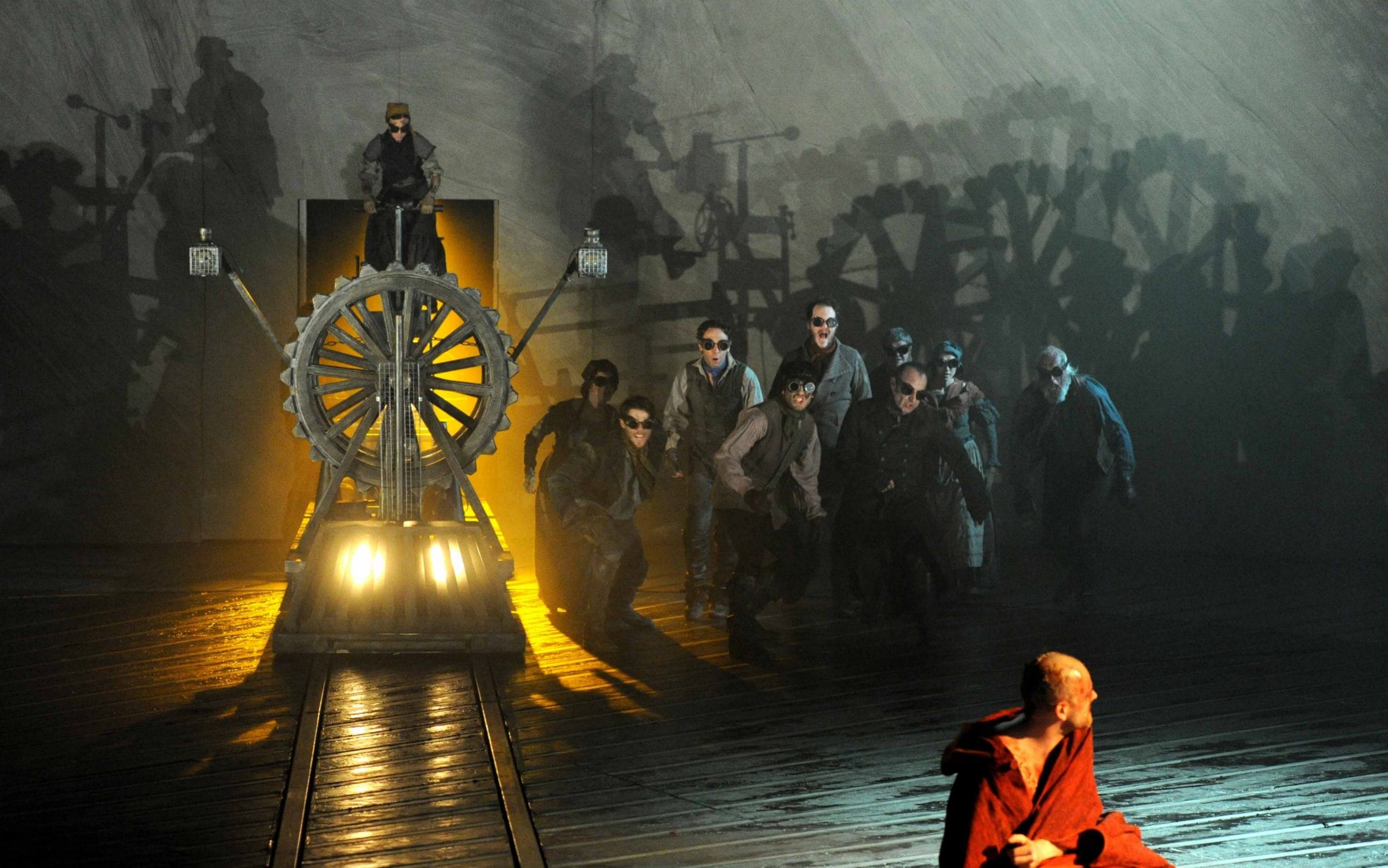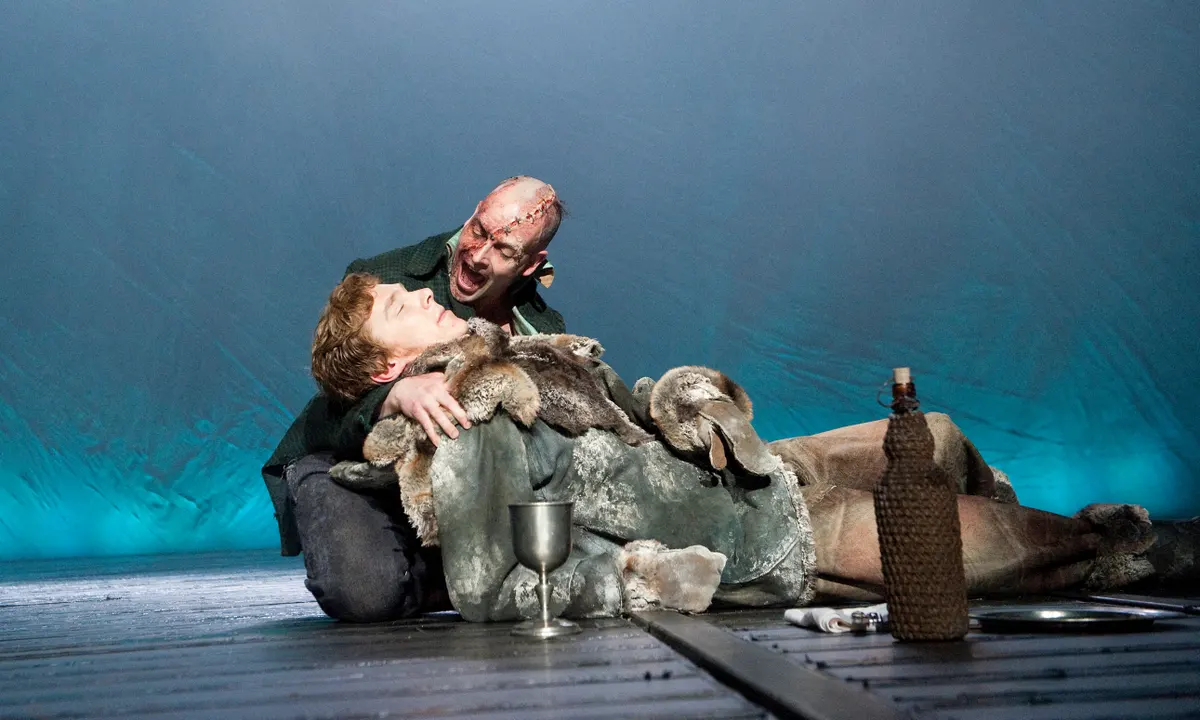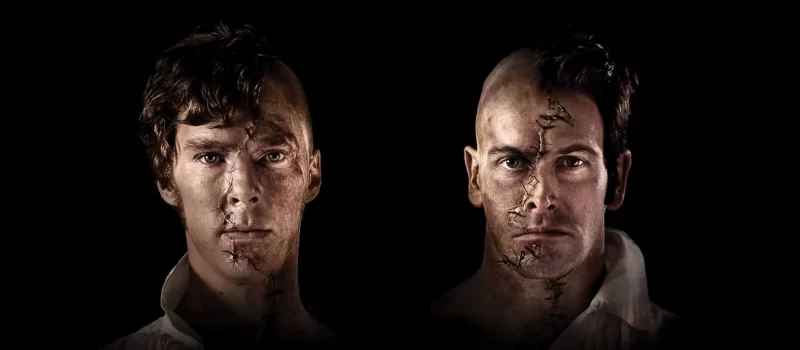A significant portion of my life was spent in a country where classical theater is at the heart of the culture. Knowing this, when I watch any National Theater play, I turn into John Coffey in The Green Mile, staring in amazement at the cinema screen. Young actors who try to perform art in “In-Your-Face” theaters that they pay for from their own pockets or the classic state theater that is entirely indifferent to any innovation. After all these, seeing blasts of fire or non-stop rain on the stage seems astounding. Perhaps you are accustomed to this type of theater, but I am not, and I am writing this review to express my admiration after Frankenstein.
In brief, let us address the topic… Directed by Danny Boyle and starring Benedict Cumberbatch and Jonny Lee Miller, Frankenstein completely abandons the classic creation process we see in movies and focuses on the post-birth pains. An unnamed creature is born into a world where even he struggles to define himself and tries to understand this strange planet with all its beauty and ugliness. Our nameless creature, who discovers his hunger for learning and love, eventually returns to his creator.

Classical subjects are constantly addressed in the theater. However, nowadays, different perspectives are being brought to these subjects. While a classic Frankenstein story focuses on the doctor’s creation process, Danny Boyle’s production focuses on the struggle for life. One of the different perspectives is the switching roles between Jonny Lee Miller and Benedict Cumberbatch in every play. One day, one of them is a doctor while the other plays the creature. I happened to see Lee Miller’s version. Of course, I succumbed to my curiosity and also took a look at Benedict’s version, which I will also write about.
The resources of the National Theater are genuinely astonishing. After watching plays performed with almost nothing in a narrow and dilapidated 50-seat theater for years, it is impossible not to be surprised when you see what they do on stage. The grassy stage, the descending house, the lighting of the fire, the rain, the slanted bedroom, and the mountainous areas. Sometimes I couldn’t even notice where something came from while following the play. Not only are you amazed by their resources, but you also realize the quality of the play that these resources contribute to when you think about the realism they add to the actors. For example, Miller’s wet cape on the damp grass after getting wet gives a sense of reality that many actors may want to experience but cannot.
At the beginning of the play, Lee Miller promises to deliver an excellent performance portraying the creature’s search for identity. His acting during the birth and labor pains is highly devoted. Lee Miller’s way of spitting while speaking, and not wiping it off – as I assume – adds a remarkable realism. Especially the parts where he learns to speak are the most enjoyable to watch. Feeling both good and evil simultaneously but only remembering the physical pain of evil shows how well Danny Boyle understood Mary Shelley. “Love,” which many overlook as a subtext, was always the fundamental element of Frankenstein. The chaos created by lack of love and being excluded is painfully conveyed in the play.

After watching Lee Miller’s fantastic performance, I was curious about how Benedict would portray the creature. As I suspected, despite being a great actor, he was unable to force something that wasn’t within himself. Although the idea of playing different roles every day is extraordinary, Lee Miller’s performance as the creature will be remembered as one of the most successful performances for years to come.
I believe the play successfully blends seriousness and humor. It raises excitement and fear when necessary while also making you laugh. Especially the creature’s “Of course” answer to Frankenstein’s “Is the world round?” question is a well-thought-out reference. In my opinion, the weakest part of the play is the finale. The play significantly slows down the pace in the final part, which goes beyond my expectations in terms of limits that are drawn with rape and death. I can even say that the final does not feel like a final. Although it heads toward the 1944 production “House of Frankenstein,” I cannot say that I liked it.
In conclusion… Danny Boyle’s Frankenstein is a magnificent work that uses the National Theater’s facilities and focuses on the essence of the original story, the creature’s search for love and then exclusion. In this play, two fantastic actors dazzle with their performances, and Lee Miller presents an unforgettable creature performance. Although the final part is a bit weak, the play offers reasons to think and laugh, focusing on the philosophical creature that should be the real focus, rather than the usual aggressive creature theme.

Cast & Crew
director: Danny Boyle
writers: Marry Shelley
starring: Benedict Cumberbatch, Jonny Lee Miller
UK | 2011 | 170 MINUTES |
